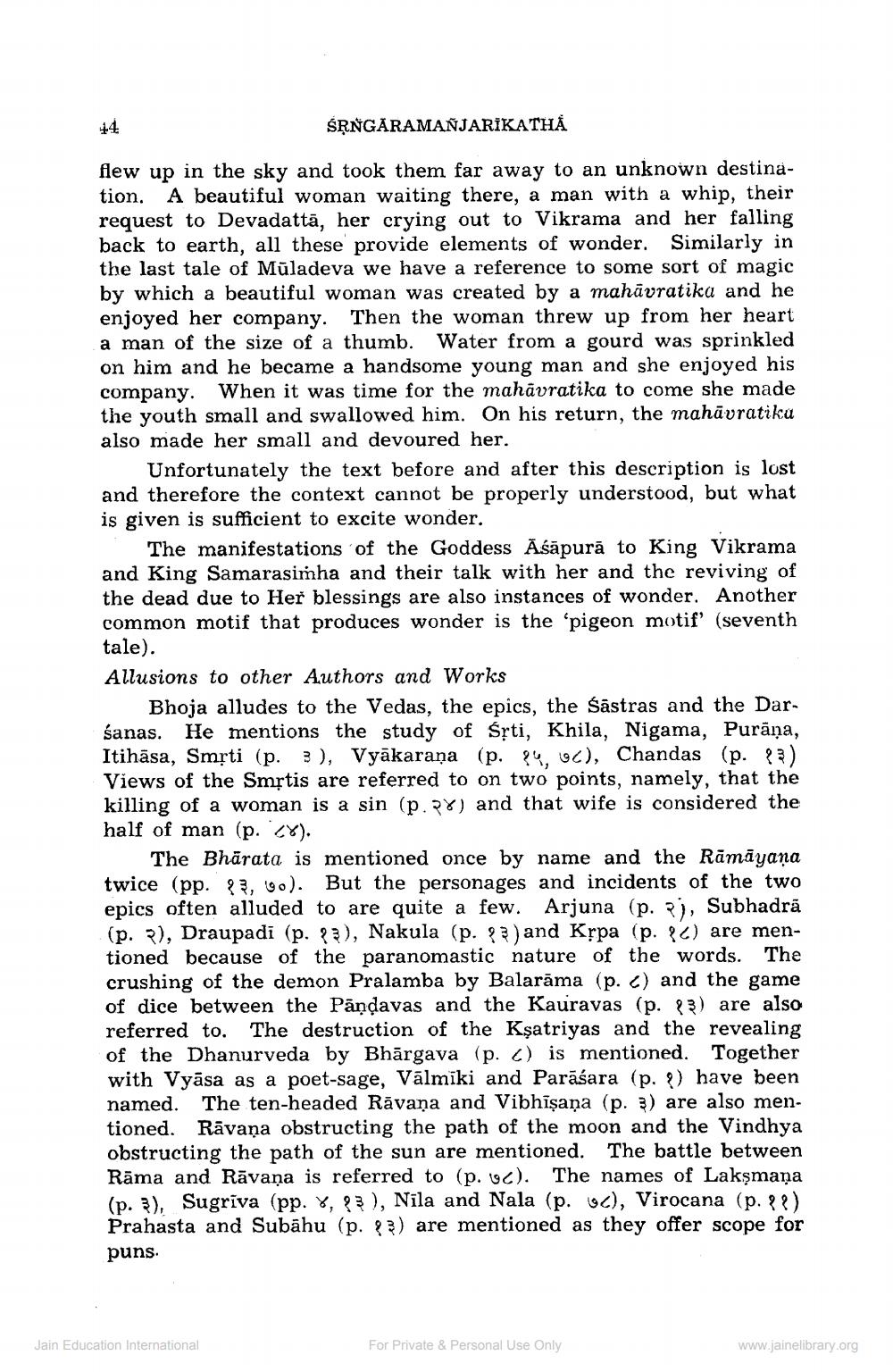________________
SRNGĂRAMANJARIKATHA
flew up in the sky and took them far away to an unknown destination. A beautiful woman waiting there, a man with a whip, their request to Devadatta, her crying out to Vikrama and her falling back to earth, all these provide elements of wonder. Similarly in the last tale of Müladeva we have a reference to some sort of magic by which a beautiful woman was created by a mahāvratika and he enjoyed her company. Then the woman threw up from her heart a man of the size of a thumb. Water from a gourd was sprinkled on him and he became a handsome young man and she enjoyed his company. When it was time for the mahāvratika to come she made the youth small and swallowed him. On his return, the mahāvratika also made her small and devoured her.
Unfortunately the text before and after this description is lost and therefore the context cannot be properly understood, but what is given is sufficient to excite wonder.
The manifestations of the Goddess Aśāpurā to King Vikrama and King Samarasimha and their talk with her and the reviving of the dead due to Her blessings are also instances of wonder. Another common motif that produces wonder is the 'pigeon motif' (seventh tale). Allusions to other Authors and Works
Bhoja alludes to the Vedas, the epics, the Šāstras and the Darśanas. He mentions the study of Śrti, Khila, Nigama, Purāņa, Itihāsa, Smộti (p. 3), Vyākarana (p. 34, 6C), Chandas (p. 83) Views of the Smptis are referred to on two points, namely, that the killing of a woman is a sin (p.3%) and that wife is considered the half of man (p. 19).
The Bhārata is mentioned once by name and the Rāmāyana twice (pp. 83, 490). But the personages and incidents of the two epics often alluded to are quite a few. Arjuna (p. Ri, Subhadrā (p. P), Draupadi (p. 83), Nakula (p. 83) and Krpa (p. 8.) are mentioned because of the paranomastic nature of the words. The crushing of the demon Pralamba by Balarāma (p. c) and the game of dice between the Pandavas and the Kauravas (p. 83) are also referred to. The destruction of the Kşatriyas and the revealing of the Dhanurveda by Bhārgava (p. C) is mentioned. Together with Vyāsa as a poet-sage, Vālmīki and Parāśara (p.) have been named. The ten-headed Rāvana and Vibhīşaņa (p. 3) are also mentioned. Rāvana obstructing the path of the moon and the Vindhya obstructing the path of the sun are mentioned. The battle between Rāma and Rāvana is referred to (p. uc). The names of Lakşmaņa (p. 3), Sugriva (pp. 8, 83), Nila and Nala (p. c), Virocana (p. 82) Prahasta and Subāhu (p. 83) are mentioned as they offer scope for
puns.
Jain Education International
For Private & Personal Use Only
www.jainelibrary.org




